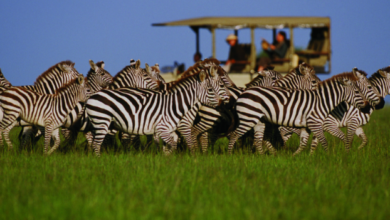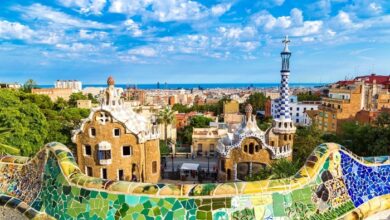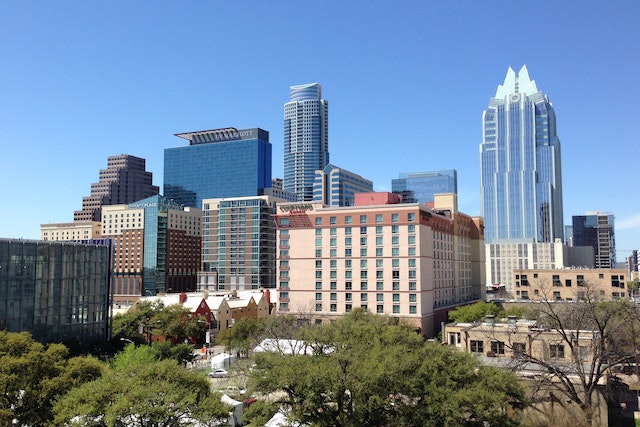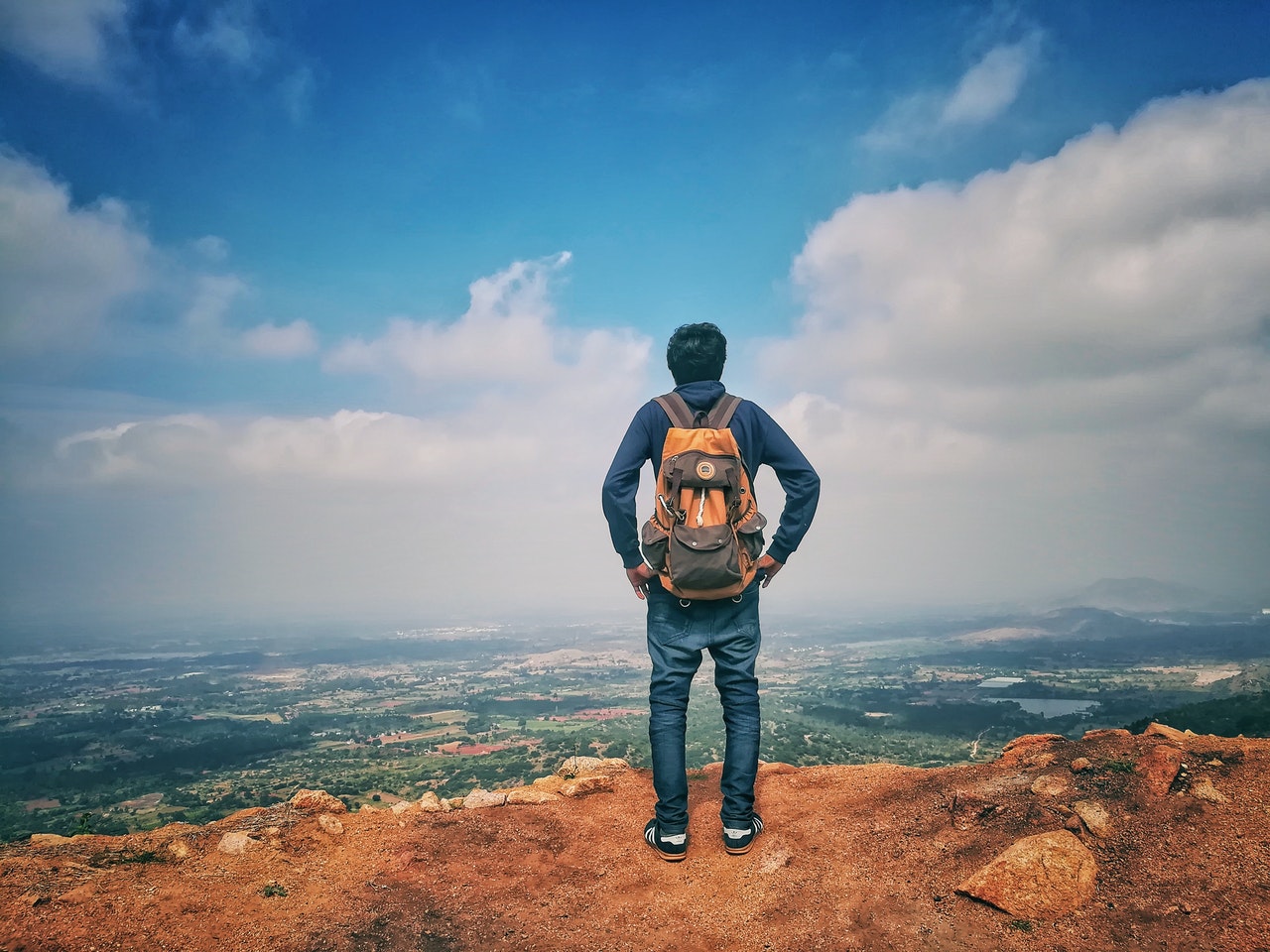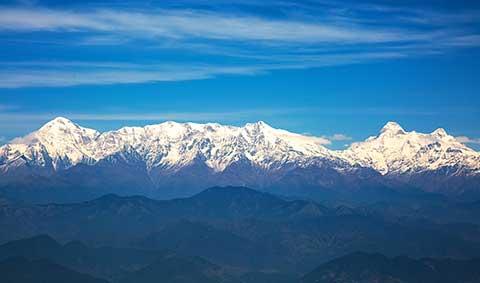The Best Time To Visit Fiji

Table of Contents
The best time to visit Fiji depends on what you want to do while there. It has a warmer tropical climate all year round, with the lowest final, but has different wet and dry seasons.
The wet season lasts from November to April, and the dry season lasts from May to October. Temperatures are pleasant all year round, rarely below 20 degrees Celsius, and there is plenty of sunshine.
Best time to visit Fiji?
the best month to visit Fiji is in May. Not only will you arrange cheap flights and stays at this time of year. But you will also enjoy clear sunny skies with less chance of rain and high temperatures, making it the The best time to visit Fiji for outdoor activities.
May is okay before the start of the peak season. So there is usually less crowding around the islands, and the price of goods and services should still be very competitive.
Peak & Off-Peak Seasons for
Not only are the most popular seasons expensive, but the peak and off-peak use that influences your decision about when to travel to Fiji due to being the busiest are the Australian and New Zealand winter school holidays, as many families choose to travel from July to August. It is the Best Time To Visit Fiji.
During the Christmas / New Year period, resorts often fill the Southern Hemisphere with summer breaks for families. If you are traveling with the whole family. If you do not like it very much. Then go out with a group of friends.
However, The best time to visit Fiji we have low seasons in Tute Off-Peak Deals and quiet islands (February, March, June, October, and November). This is the best time for couples to visit, especially if they want to be at peace, a romantic holiday.
No matter when you visit, we have a wide selection of Fiji resorts throughout the year.
About Fiji Weather
One of the best things about visiting a warm tropical climate in the South Pacific is to make sure you have warm weather throughout the year. Fiji’s good and bad weather is then determined by the wet and dry seasons. Which means how much rain you are likely to get each month.
The best time in Fiji for clear blue skies is from May to September. The wet season is created from October to April. Which is at the highest risk of cyclones during most of the year. However, this is also the case when you will see the highest temperature throughout the year.
Fiji Weather by Month :The best time to visit Fiji
January The best time to visit Fiji
The best time to visit Fiji Still, at the top of the high season with school holidays in Australia and New Zealand. This month is also in the middle of the wet season. When it is not raining, the temperature is high (but only a further 5 degrees or its average temperature is 30 degrees Celsius).
Still, humidity can force some visitors to go back inside. Always check local media, hotel announcements, and official websites about possible cyclones.
February
The highest risk of cyclones is this month. On average, one hurricane passes through Fiji every year. Some years nothing, but in April 2018, there were two people in 1 week, and Winston was threatened in February 2016.
Although most cyclones miss the main tourist destinations. They still bring peripheral winds and rainfall, making travel by plane, boat, and even road almost impossible.
March
The highest risk of cyclones is this month. On average, one hurricane passes through Fiji every year. Some years nothing, but in April 2018, there were two people in 1 week, and Winston (the most severe of all time in the entire South Pacific region) was threatened in February 2016.
Although most cyclones miss the main tourist destinations, they still bring peripheral winds and rainfall, making travel by plane, boat, and even road almost impossible.
April
Locals are relieved that heavy rains have receded in the middle of the month. This is the end of the official cyclone season and the decrease in humidity levels. But don’t throw away the umbrella and wet-weather gear yet.
May
The beginning of the dry season and the formal end of possible cyclones. The weather quickly cools and dries up, but light-heavy rainfall can last a week or more than two days.
The water becomes clear for snooker and divers, and light winds and waves start the surfing season. It is the Best Time To Visit Fiji.
June
Heavy rainfall (optimistic) usually goes away with perfect weather, low humidity, and endless dry and clear days coincide with the start of a busy season. The nights are more relaxed. It makes it easier to sleep, and taking a jumper with you after dark is not as stupid as it sounds.
July
By now, some locals have started complaining about the ‘cold weather’! It is calm and pleasant as there is little or no rain day after day. It can even become chilly at night, with temperatures as high as 18 degrees Celsius.
August
As the nights get colder and the days get lighter than hot, heavy rain can turn into front-page news.it is the Best Time To The best time to visit Fiji. The downside is the masses coming from Europe, where ironically it is probably more heated. The water temperature is a bit cold, but the sea is still very swimming.
September
This month’s Best Time To Visit Fiji.One of the best months with continued dry and pleasant weather and a significant reduction in the number of tourists and hotel rates.
October
For the calm and dry weather last month, there has been growing concern among locals over the cyclone. Some water-sports centers are slowly or even shutting down due to diving and snorkeling due to cloudy water. As temperatures and humidity rise, surfers pack their boards and elsewhere.
November
The beginning of the wet season is also known as ‘summer,’ which lasts until April. The temperature rises a few degrees (Celsius), but the humidity becomes noticeably more uncomfortable. And cyclones are now possible anytime, so be careful. The main hilly islands of VT Lemu and Vanua Lemu may have different climates with different coastlines.
December
As the humid season continues, there may be periodic heavy rains that can affect the holidays, high humidity, and increased crowds on school holidays in Australia and New Zealand.
Boat and air travel may be suspended, and roads may be flooded from time to time. But rainfall is often short, and flooding is quite rare, although it is still sunny for many days.
Fiji flights
The average price of a flight to Fiji fluctuates drastically throughout the year. Airplanes will always be the most expensive during the main travel period, such as the holiday and peak travel seasons.
Some of the most expensive months to return to Fiji are in June, July, August, and September, but prices rise to the highest in December during the school holidays.
Fiji accommodation
Suppose you are wondering when to go to Fiji to take advantage of the low-cost accommodation period. In that case, you may want to take your Fiji vacation in the humid season, starting in October and may end in April. Be careful, however, as prices at Fiji resorts could spread around the end of the year during the holiday season.
The dry / peak season sees the highest average prices for accommodation in Fiji, especially in July and August, two months with the highest number of travelers to Fiji in 2018.
Fiji ON/Off-peak periods
Fiji’s most popular time is from June to September, which is considered the on or peak season. During the dry season, international travelers travel to the islands of Fiji during this time. Despite being in the middle of the wet season in December, the number of travelers on the December holidays increases again.
The wet season is generally considered the off-peak season, but many people still travel to Fiji to enjoy the island’s many offerings from November to April. So if you are interested in exploring Fiji without crowds, February to April is the best time for sightseeing.
Things to do in Fiji
You must have a fantastic time exploring the Fiji Islands, but there are several popular attractions during your stay.
Viti Levu
If you fly to Fiji, you will land at Nadi Airport in VT Levu, the largest island in the Fiji Islands. But before you can enjoy the pleasures that small islands can offer, check out the attractions on the main island, starting with the village of Navala, the capital of Fiji, Subha, and even on the banks of the Navajo River.
Vanua Levu
Vanua Lemon is one of the largest islands in Fiji but nowhere near as busy as VT Lemon. For travelers to escape from the more rustic side of Fiji, visit a hidden village or immerse yourself in the soft rainwater and try to hide some of the unique birds, reptiles, and mammals that make the forest their home.
Mamanuca Islands
If you’re wondering where to go for snorkeling in Fiji, there’s no need to look any further than the Mamanuca Islands. Famous by the movie Cast and Survivor: Fiji, turquoise waters and unfamiliar white sand beaches, the Mamanuca Islands entirely surround the ideal Fijian beach.
Yasawa islands
If you’re wondering where to go for snorkeling in Fiji, there’s no need to look any further than the Mamanuca Islands. Famous by the movie Cast and Survivor: Fiji, turquoise waters and unfamiliar white sand beaches, the Mamanuca Islands entirely surround the ideal Fijian beach.
Denarau island
Considered a luxury island, Denarau Island is essentially an archipelago which means it is ultimately accessible to flying travelers.
Diving in The best time to visit Fiji
The tubes around the Fiji Islands contain thousands of marine life species and hundreds of species of coral. There are various ways to explore these gorgeous reefs, from scuba-diving to snorkeling views up close between the giant Monta Ray and the green sea turtle. If you expect to catch a glimpse of these beautiful marine creatures, the months between May and October are the best time to dive into Fiji.
Do I need a visa for The best time to visit Fiji?
There are some essential things you need to know before you leave for Fiji.Australians looking to travel to Fiji do not need a travel visa for up to 4 months.
There are other requirements for entry into The best time to visit Fiji. Travelers must have a valid passport for six months from the date of arrival, return, or outbound ticket and ensure their stay for the duration of the trip.
Health risks in Fiji
The best time to visit Fiji : There is no vaccine to prevent dengue fever that is transmitted through mosquito bites. Symptoms include fever, joint and muscle pain, nausea, headache, and nausea.
Hepatitis A
Symptoms include fever, nausea, vomiting, and abdominal pain. In extreme cases, there may be liver damage.
Typhoid The best time to visit Fiji
Symptoms include fever, muscle aches, nausea, abdominal pain, and diarrhea.
What vaccines do I need for Fiji?
It would help if you got vaccinated before you can travel. Try to get the vaccines 4-8 weeks before your trip.
Tetanus-diphtheria
It needs to be done every ten years. The best time to visit Fiji Protects against tetanus which occurs when bacteria enter a wound and produce a neurotoxin that causes muscle rigidity and painful spasms
Typhoid Vaccine
The best time to visit Fiji Protects against typhoid fever which occurs when Salmonella is transmitted through contaminated food or water.
Hepatitis A Vaccine
The best time to visit Fiji Liver infections protect against hepatitis A, caused by eating contaminated food or water or coming in contact with an infected person.
Hepatitis B vaccine
Hepatitis B protects against liver infections that spread by contact with infected body fluids.
Helpful travel tools: The best time to visit Fiji
The best time to visit Fiji – If you plan a trip to Fiji, check out our Fiji Travel Guide to help you figure out where to stay in Fiji and some additional travel tips about Fijian culture and customs.

